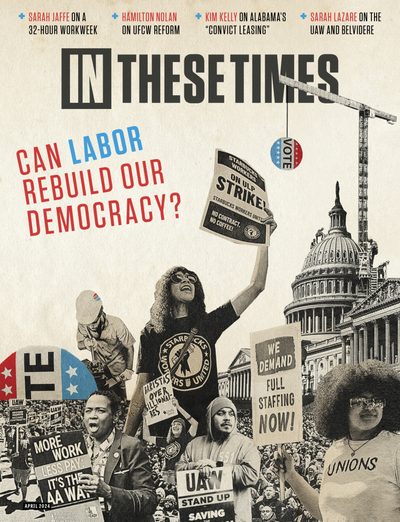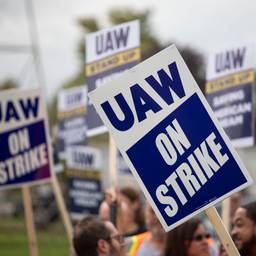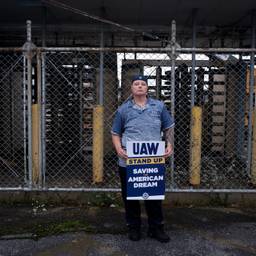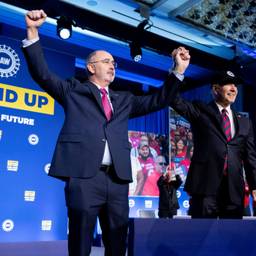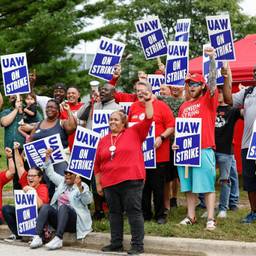The UAW Strike Saved Their Shuttered Plant, But the Fight Is Just Beginning
The revival of the Stellantis plant is a stunning reversal of fortunes for Belvidere, Ill. But workers say they won’t rest until they see the concrete being poured.
Sarah Lazare

This article is being co-published with Workday Magazine and Labor Notes.
BELVIDERE, ILL. — It’s been almost five months since JC Bengtson, an autoworker for 24 years, lost his job. “I miss working,” says the 55-year-old father of three daughters, all adults. “Right now I am unemployed and waiting to hear back.”
We are sitting in the union hall of United Auto Workers (UAW) Local 1268, in Belvidere, Ill., not far from the sprawling Belvidere Assembly Plant. Bengtson worked there for 10 years before he was officially laid off in September 2023, right before his union went on strike. The auto giant Stellantis announced in December 2022 that it would permanently idle the facility that assembled the widely popular Jeep Cherokee, and by February 2023, the majority of jobs at the plant had disappeared. In all, the company put 1,350 people out of work, including Bengtson, who was part of a later round of layoffs. (The total number of people impacted since cuts first started is far greater.)
The closure was devastating to Belvidere, a small town of 25,000 residents built around the Kishwaukee River in northern Illinois. Several restaurants and a grocery store near the plant have already closed, and workers, many of whom had families in the local schools, had grown up in the town, or had moved there for their positions, found themselves out of work, and staring at the possibility of being uprooted. The company’s willingness to walk away from a plant, and a town, where it had operated since 1965 became a symbol of corporate callousness during the UAW’s fall 2023 Stand-Up Strike against the Big Three automakers — Ford, General Motors and Stellantis. It was a source of outrage on picket lines and at rallies.
But then something stunning happened. UAW’s strike resulted in a 2023 contract that says Stellantis must reopen the plant to produce mid-sized trucks by 2027, though the language does not specify how many jobs will be created. And there’s more: Stellantis also committed to locating a parts distribution hub, as well as a brand-new electric vehicle battery plant, in Belvidere.
“We went from no future to a future on steroids,” Bengtson says. “My hope is to get back in there. We are waiting on the company to have a plan to bring us back.”
The strike had brought a closed auto plant roaring back to life, and then some. Or at least that’s what the contract guarantees on paper.
Bengtson is soft-spoken and careful with his words, quick to break into a smile. He has a white beard speckled with gray and showed up to our interview wearing a red UAW shirt. It seems everything in this union hall is stamped with the union’s distinctive wheel logo, including the large wooden table in the conference room where we sit down to talk.
He tells me the same thing as the local’s president, Matt Frantzen: We are pleased, but we will only believe it when we see the dirt being moved and the concrete being poured. The company is not being forthcoming about what exactly the plan is, they both say, and the air is one of cautious — or outright uneasy — hope.
“It’s historic that an idle plant was brought back. Wow,” Bengtson says. “Now the real work begins: getting them to follow through.”
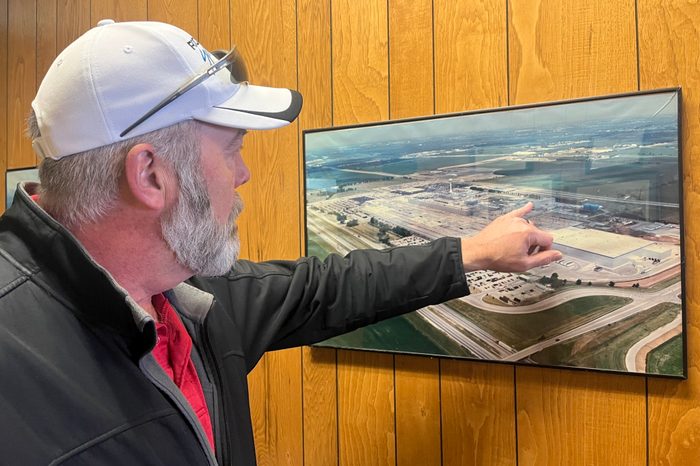

So far, Stellantis has called at least 165 employees back to work, and the company says most of them are “processing parts for distribution to dealers at the warehouse located near the plant.” (Frantzen says this number has now increased to 180.) Bengtson is a millwright, a skilled tradesman tasked with fixing mechanical equipment at numerous steps in the auto manufacturing process, from stamping to body to paint to assembly, as well as building maintenance. “I repair anything that moves,” he explains, noting that he is eager to get back to work.
In the meantime, thanks to the 2023 contract won in the strike, Bengtson gets health benefits and Supplemental Unemployment Benefit (SUB) pay amounting to around 74% of his previous full-time salary.
According to Frantzen, around 815 members of the local are receiving SUB pay and are expected to get placed into jobs eventually, on top of the 180 he says are currently back to work in parts distribution. (Not all of the people impacted by the plant closure are receiving SUB pay, because some of them transferred, retired or accepted a buyout, but those who transferred are eligible for jobs in Belvidere once things get going.)
The dramatic turn of events in Belvidere was big news in the labor world — and beyond. “Here’s why the UAW saving this Illinois auto plant is a ‘gigantic deal’,” read a November 10, 2023 headline from CNN. The reopening was championed by both Illinois Gov. J.B. Pritzker and President Biden, who visited Belvidere on November 9, 2023.
The narrative cut against an anti-union talking point commonly wielded by employers: If a workforce unionizes and goes on strike, plants will be forced to close.
“The fact [that] you have an international leadership using leverage at the bargaining table to compel the employer to rescind a plant closing decision is something we certainly have not seen in many decades, if not unprecedented,” says Barry Eidlin, sociology professor at McGill University and an expert on labor and social movements.
The SUB pay, in particular, is promising, Eidlin says, because it “dramatically increases the likelihood that they are going to reopen. They are on the hook for paying these workers anyway. It keeps people attached to the company while mitigating many of the devastating economic and social impacts of the closure.”
Under the UAW’s new contract, workers have the right to strike the whole company over plant closures, as well as products and investments. So if the company does not invest what it committed, it could have another work stoppage on its hands.
According to Eidlin, there is a need to guard against empty promises. “Many contracts have language about preventing plant closures and job security and promising new investments, and that’s basically fluff. It’s routinely violated. It’s important to keep in mind whether or not this is just more empty promises or something qualitatively different. These workers clearly understand that.”
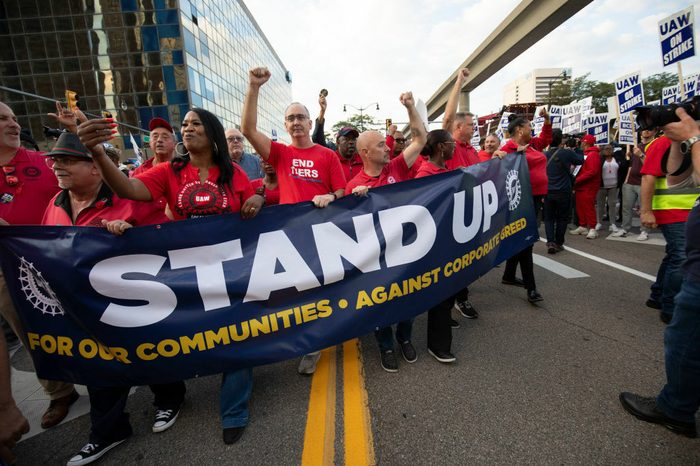
When asked about concerns that the company is not being forthcoming about its reopening plan, Stellantis spokesperson Jodi Tinson says, “We are tracking to those commitments outlined in the 2023 contract and regularly review the status with the UAW. We will provide additional details about our plans at the appropriate time.”
For Bengtson, the SUB pay still amounts to a significant pay cut, since he often worked more than 40 hours a week. “I want to make sure people understand we are not living high on the hog,” he says. “The intent is to maintain a standard of living, pay for groceries and help retain the workforce.”
Frantzen says the Belvidere gains in the contract also come with possible downsides for workers in other locations. The parts distribution hub, slated to be in business in 2024, will consolidate similar hubs in Marysville, Mich., Chicago and Milwaukee. “Some other locations may be closing down, and some of those individuals may be coming here to work at that parts depot,” he says, sitting in his office, where a poster shows the legendary labor activist and songwriter Joe Hill alongside Jack London’s definition of a scab. “There will ultimately be more jobs, but these people are in the same boat we were in where they may have to move.”
And then there is the issue of a just transition. Under the leadership of UAW president Shawn Fain, who won the union’s presidency as a reform challenger in March 2023, the union has pressed for jobs in green manufacturing, including electric vehicles, to be good union jobs, and for autoworkers who lose their jobs to be taken care of. The idea is that, in any shift away from a fossil fuel economy, no worker should be left behind. Fain has not shied away from calling for a just transition to ensure labor “won’t be left behind,” using some of the same language that is embraced by climate activists seeking to mitigate the harms of climate change. This has provided an opening to build relationships between these movements.
Numerous climate activists rallied behind the striking workers last fall, and heralded just transition gains in the Big Three contracts, particularly at GM and Stellantis, where the companies agreed to include workers at electric vehicle plants where they have joint ventures with other companies to be included in the UAW master agreement. The companies had previously refused, based on the contested argument that joint ventures with foreign companies constitute separate legal entities.
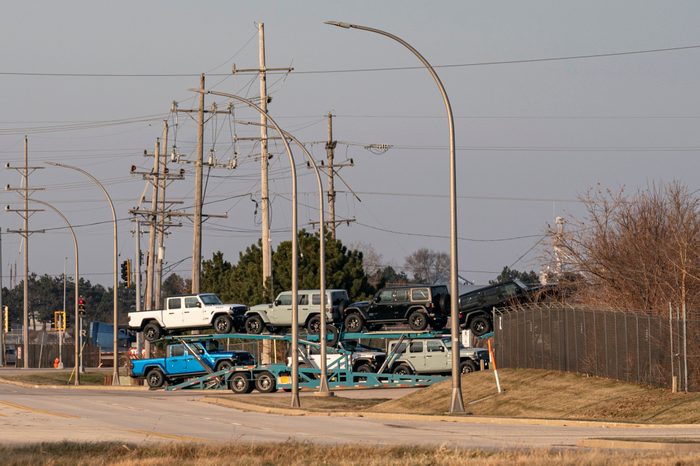
In a UAW summary of the deal, the union describes the contractual language stipulating a new electric vehicle battery plant in Belvidere by 2028 as part of “winning a just transition.” The summary states, “Eight months ago, Belvidere was flat on its back. The last worker had just walked out of our plant, and the company had no plans to reopen it. Now, not only will we have an assembly plant in Belvidere, we have won a commitment from Stellantis to locate a new battery plant there.”
But this does not mean all UAW members are giddy about the shift to electric vehicles. “I’m not sure 100% of the membership has bought into electric vehicles,” Frantzen says. “But if that is how we are getting help from the federal and state government, we’ve gotta do what we’ve gotta do.” The Biden administration has given billions of dollars in subsidies to auto manufacturers for producing electric vehicles, and the state of Illinois also has an incentives program.
Asked about his view of a just transition, Bengtson says the union has to adapt to changes in the industry, which means making sure that in any transition away from fossil fuels, labor standards are not driven down.
Both Bengtson and Frantzen consider themselves supporters of Fain. “None of this would have taken place if the new administration had not gotten in,” Frantzen says of the developments in Belvidere.
UAW’s contract with Stellantis was ratified in November 2023, with roughly 68% voting in favor. In Belvidere, those numbers were higher: Local 1268 saw an 81% yes vote among production workers and an 88% yes vote among skilled trades workers. Alongside the Belvidere provisions, the contract increased starting wages around 67% and top wages around 33%, got back a cost-of-living allowance and increased contributions to 401(k)s. (While pensions were not restored for everyone, they were improved for those hired before 2007.) The contract, which represents 26,000 workers, also made strides toward reducing wage tiers, though they were not eliminated.
Still, Bengtson has trust issues with the company, which are informed by his experience at General Motors earlier in his career. That was when he was laid off from the Janesville Assembly Plant in Wisconsin when it largely idled in 2008. “They left that factory standing for years, and it gave people a lot of false hope in that community,” he says.
Eidlin, the sociology professor, says that, in the case of Belvidere, the latest contract “challenges the idea that investment decisions are purely a matter of management prerogative. Workers and their communities actually do have a say in how these investment decisions are made, because they are the ones that are making the profits. We can’t and shouldn’t just leave all the fundamental decisions about how resources are allocated in society to employers.”
While out of work, Bengtson, who lives in Belvidere Township, has been volunteering once a month with his wife at the union hall to deliver food to community members in need, in partnership with a local food bank. And during the Stand-Up strike, he traveled to Naperville, Ill., to walk the picket lines. There he witnessed how autoworkers are being uprooted to stay in their field. “The strike captain there was still living in Roscoe,” he says, referring to a village about 90 miles away from Naperville. “He had to commute one and a half hours to work.”
For now, workers like Bengtson who are still out of work are stuck in a state of limbo. “People were excited about the agreement,” says Frantzen. “We went from not knowing what the future will be to realizing we will stay here.”
“This kind of extension is unprecedented,” he adds. “Now we are waiting on calls from the corporation. Is there work coming? How many more do you need this week?”
This article is a joint publication of In These Times, Labor Notes and Workday Magazine, a non-profit newsroom devoted to holding the powerful accountable through the perspective of workers. Labor Notes is a media and organizing project that has been the voice of union activists who want to put the movement back in the labor movement since 1979.
Sarah Lazare is the editor of Workday Magazine and a contributing editor for In These Times. She tweets at @sarahlazare.
